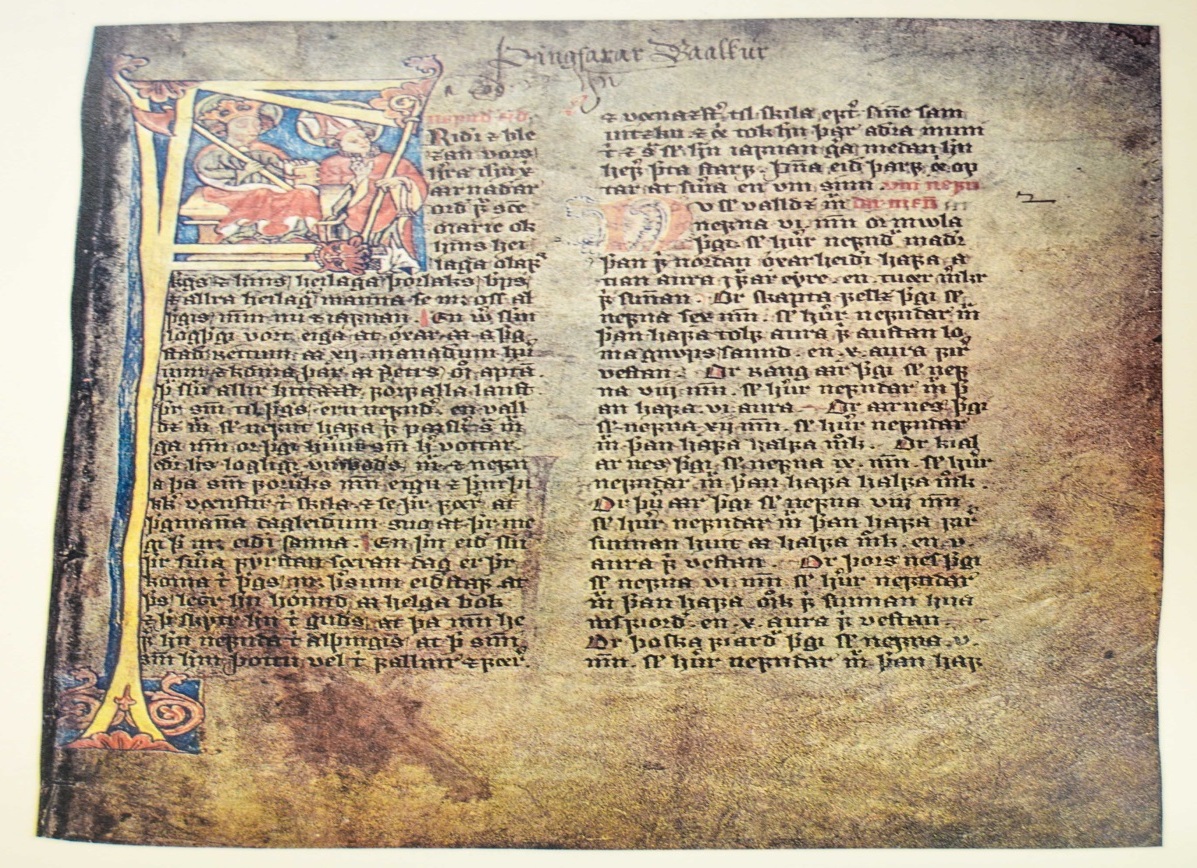Law of Iceland on:
[Wikipedia]
[Google]
[Amazon]
 Law of Iceland during the
Law of Iceland during the
''Read in Jónsbók''Icelandic manuscripts
John Rylands Library (MSS. Icel. 2-5 are copies of the Jónsbók) {{iceland-stub
 Law of Iceland during the
Law of Iceland during the Commonwealth
A commonwealth is a traditional English term for a political community founded for the common good. Historically, it has been synonymous with "republic". The noun "commonwealth", meaning "public welfare, general good or advantage", dates from the ...
(930—1262) was decided by the Althing
The Alþingi (''general meeting'' in Icelandic, , anglicised as ' or ') is the supreme national parliament of Iceland. It is one of the oldest surviving parliaments in the world. The Althing was founded in 930 at (" thing fields" or "assemb ...
. It has changed over the years but the legislative body is still called Althing.
History
Prior to 1262 the law-code was ''Grágás
The Gray (Grey) Goose Laws ( is, Grágás {{IPA-is, ˈkrauːˌkauːs}) are a collection of laws from the Icelandic Commonwealth period. The term ''Grágás'' was originally used in a medieval source to refer to a collection of Norwegian laws an ...
''.
Following the '' Gamli sáttmáli'', Magnus VI of Norway
Magnus Haakonsson ( non, Magnús Hákonarson, no, Magnus Håkonsson, label= Modern Norwegian; 1 (or 3) May 1238 – 9 May 1280) was King of Norway (as Magnus VI) from 1263 to 1280 (junior king from 1257). One of his greatest achievements was the ...
introduced the law-code ''Járnsíða
Járnsíða (, ''ironside'') was a law-code which Magnus VI of Norway had composed for Iceland, which came formally under Norwegian control during 1262–1264. ''Járnsíða'' was introduced over 1271–1273, superseding the previous law-code '' Gr ...
'', which was itself superseded when existing laws were compiled in the Jónsbók by Jón Einarsson
Jón is an Old Norse common name still widely used in Iceland and the Faroes.
According to Icelandic custom, people named Jón are generally referred to by first and middle names and those without a middle name are referred to with both first nam ...
(in 1281).
The Althing was suspended in 1799, and re-established in 1845 as an advisory body of the Danish king
This is a list of Danish monarchs, that is, the kings and queens regnant of Denmark. This includes:
* The Kingdom of Denmark (up to 1397)
** Personal union of Denmark and Norway (1380–1397)
* The Kalmar Union (1397–1536)
** Union of Denmark, ...
and from 1874 as a legislative body.
The legislative body of the modern Republic of Iceland
Iceland ( is, Ísland; ) is a Nordic island country in the North Atlantic Ocean and in the Arctic Ocean. Iceland is the most sparsely populated country in Europe. Iceland's capital and largest city is Reykjavík, which (along with its s ...
(since 1944) is again known as Althing
The Alþingi (''general meeting'' in Icelandic, , anglicised as ' or ') is the supreme national parliament of Iceland. It is one of the oldest surviving parliaments in the world. The Althing was founded in 930 at (" thing fields" or "assemb ...
.
Uses of old laws
Old laws are still quoted, the 13th century law of Grágás was used in a case in 2017 regarding an injury caused during a friendly fight.See also
*Icelandic nationality law
Icelandic nationality law is based upon the principles of jus sanguinis. In other words, descent from an Icelandic parent is the primary method of acquiring Icelandic citizenship. Birth in Iceland to foreign parents does not in itself grant Icel ...
References
* Jana K Schulman, The Laws of Later Iceland: Jónsbók: The Icelandic Text According to MS AM 351 fol. Skálholtsbók eldri. With an English Translation, Introduction and Notes (2010) . * Hans Fix: ''Wortschatz der Jónsbók''. Lang, Frankfurt am Main/Bern/New York 1984, . ;NotesExternal links
''Read in Jónsbók''
John Rylands Library (MSS. Icel. 2-5 are copies of the Jónsbók) {{iceland-stub